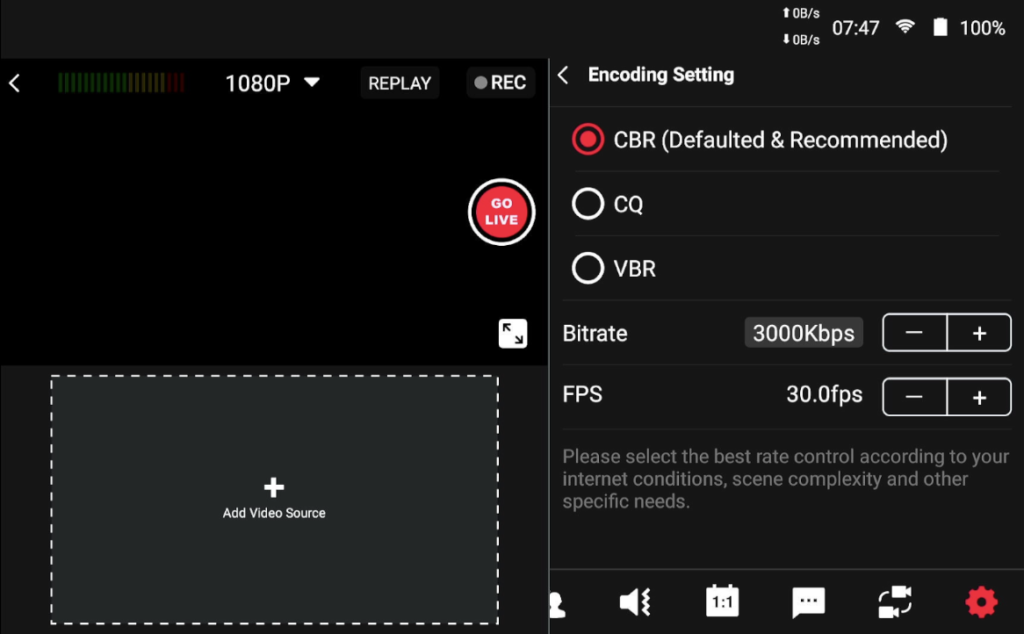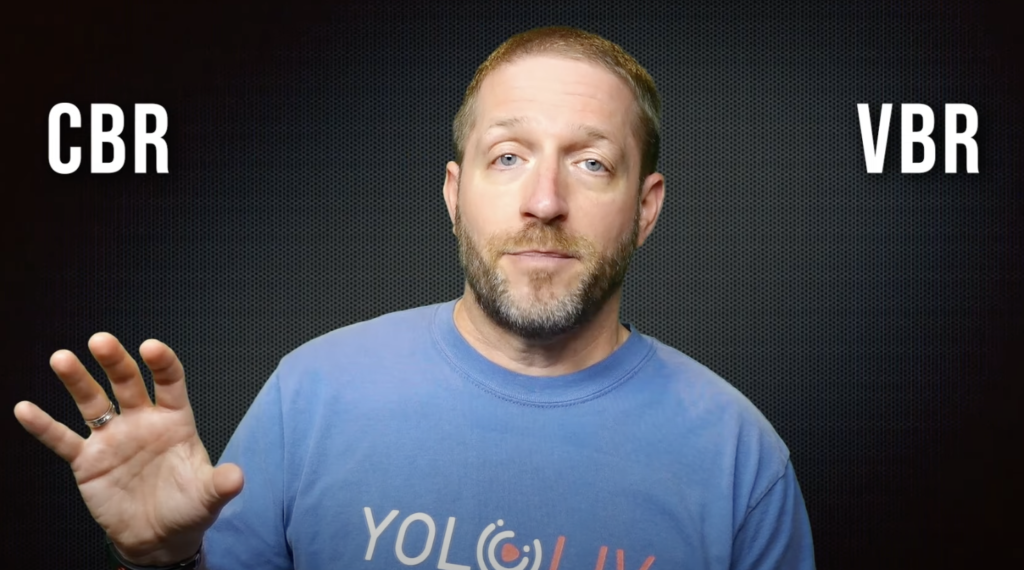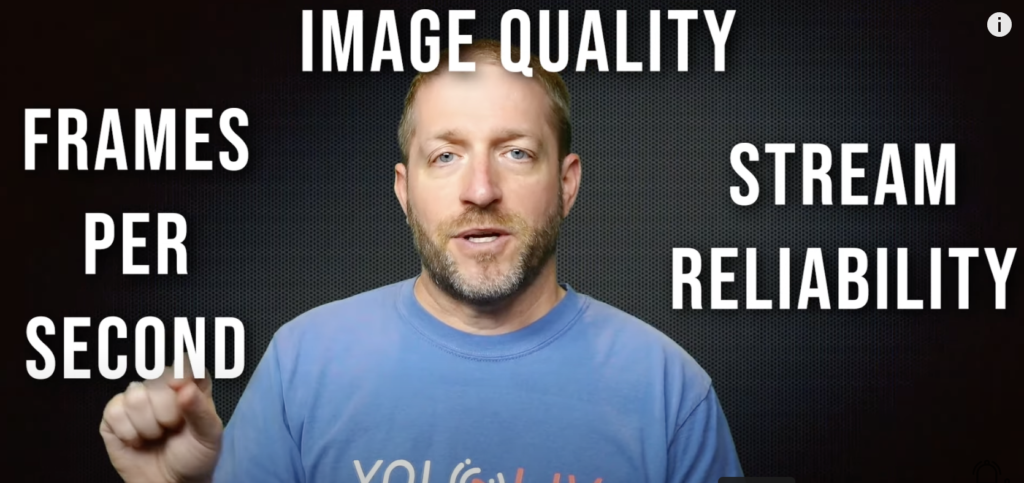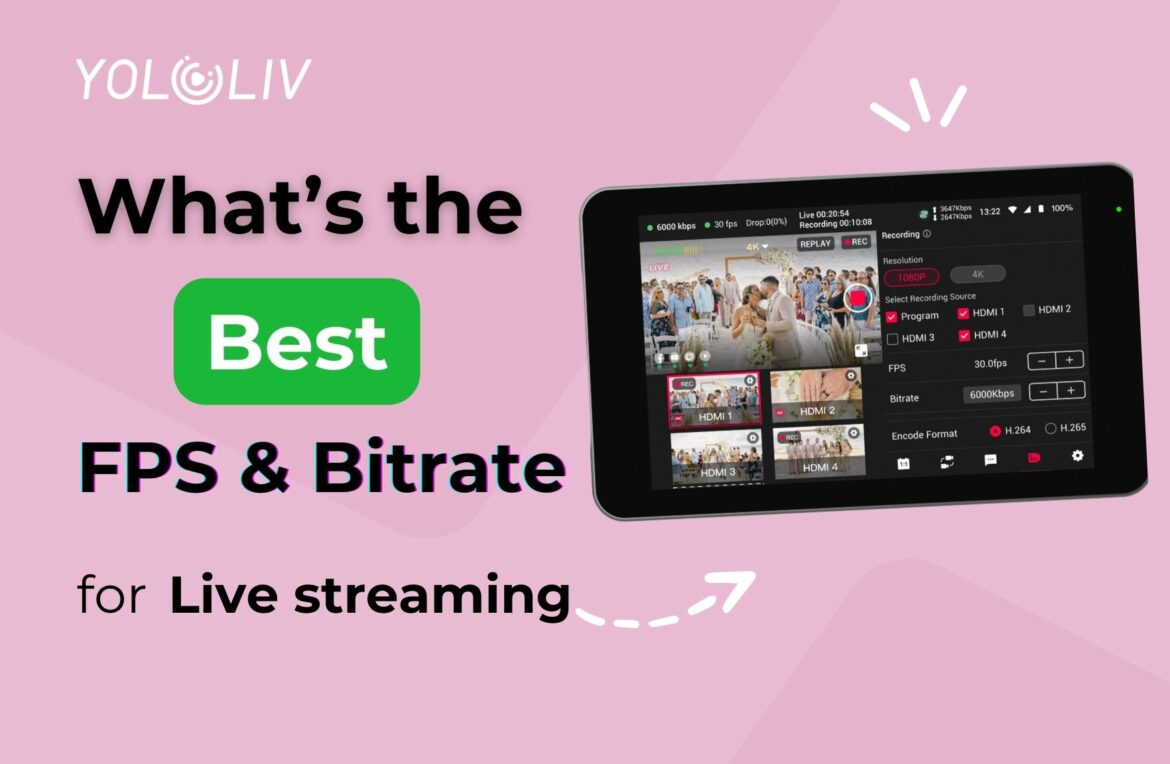An Introduction to Stream Settings
YoloBox users often ask “What’s the best frame rate or data rate?” The truth is, there isn’t a one-size-fits-all answer. From talk shows to soccer games or musical concerts, everyone’s streaming needs vary. This article demystifies the intricacies of YoloBox’s stream settings and imparts insights into personalizing it for the best results.
Factors such as context (streaming or recording), available bandwidth, and the type of content greatly influence the appropriate frame rate and bit rate for your streams. Understanding your needs and constraints is the first step to step tailoring your YoloBox settings.
The Three Pillars of Stream Settings
Setting up a live stream or recording involves balancing three essential parameters:
- Constant Bit Rate (CBR) or Variable Bit Rate (VBR)
- Total Bit Rate of the Stream
- Frames Per Second
Collectively, these determine the final image quality of one’s broadcast. However, balancing these archetypal pillars is no mean feat. For instance, broadcasting sports might require higher frame rates, which in turn leaves less data for each frame. Conversely, streaming over a network with limited bandwidth often calls for fewer frames per second.

How to Adjust Settings On YoloBox
To personalize these settings on YoloLiv, users need to navigate to the gear icon to access encoding settings. There, the user determines how YoloBox’s in-built compressor manipulates the video feed. It’s important to emphasize that YoloBox uses a single compressor, resulting in identical outputs for both streaming and recording feeds.
Understanding CBR Vs. VBR
With a constant bit rate (CBR), each frame receives an equal amount of data, regardless of demand. However, this could result in lower quality when streams require quick movement or transitions, such as sports broadcasts. Here, a variable bit rate (VBR) offers a solution by adjusting the data allocations according to real-time demand, which, unfortunately, could lead to frame drops if the maximum data limit is exceeded.

Delving Deeper into Frames per Second
The frame rate impacts the detail captured in each frame and hence drastically affects the image quality. For example, at five kilobits per second, a frame rate of 60 fps provides 83 kilobits per frame. However, reducing this frame rate to 30 fps automatically doubles the data available for each frame, aiding retention of detail.
Balancing Quality and Reliability
Determining the best settings involves making trade-offs between the frame rate, bit rate, and the encoding mode. For instance, while CBR might suit streaming for its reliability, the VBR might be more desirable where superior image quality is key. The choice hinges on the specific requirements and goals of the streaming experience.

Conclusion
Mastering the YoloBox settings is not an easy task, but one that can pay dividends in the quality of one’s stream. Like any skill, it takes time and practice to grasp. In essence, it requires understanding the delicacies of live streaming and finding the optimal balance based on your specific needs.
YoloLiv encourages all to delve into this process and discover the best configuration that will enrich your live streaming experience, bringing you closer to your audience, one stream at a time. We hope this guide proves beneficial, and, as always, the YoloLiv Community is eager to see the incredible content you craft. Happy Streaming!
10,443 total views, 39 views today

Ellie, the Customer Success Manager at YoloLiv, devoted to ensuring every customer enjoys a satisfied product experience. She proactively addresses customer inquiries and needs to deliver exceptional service.


